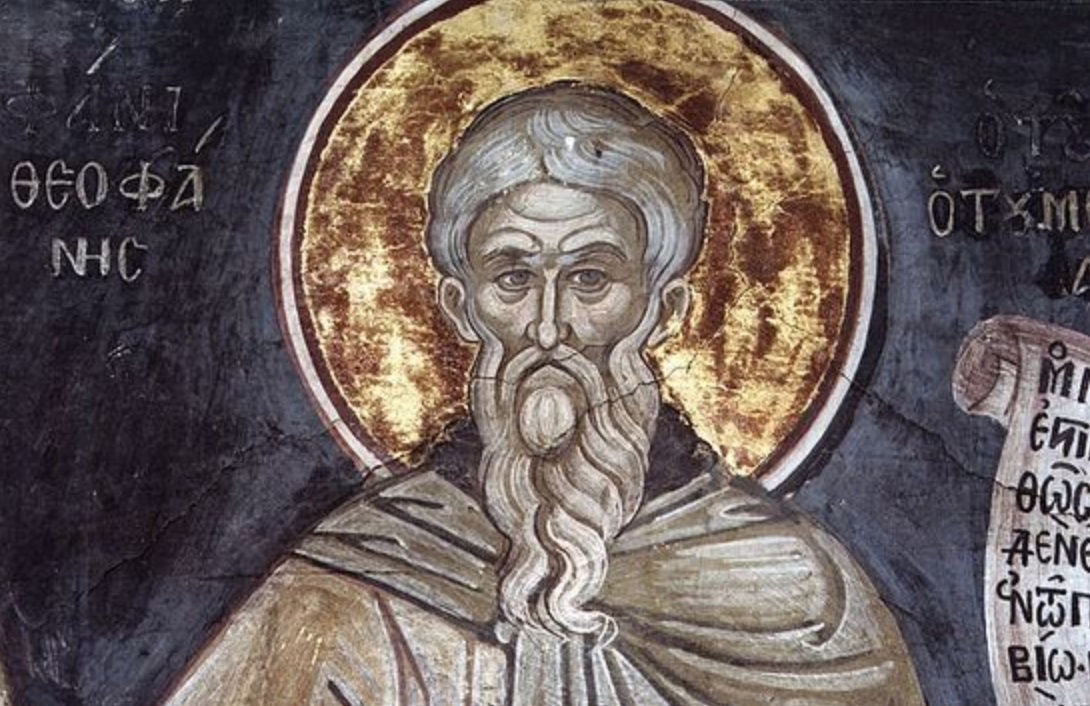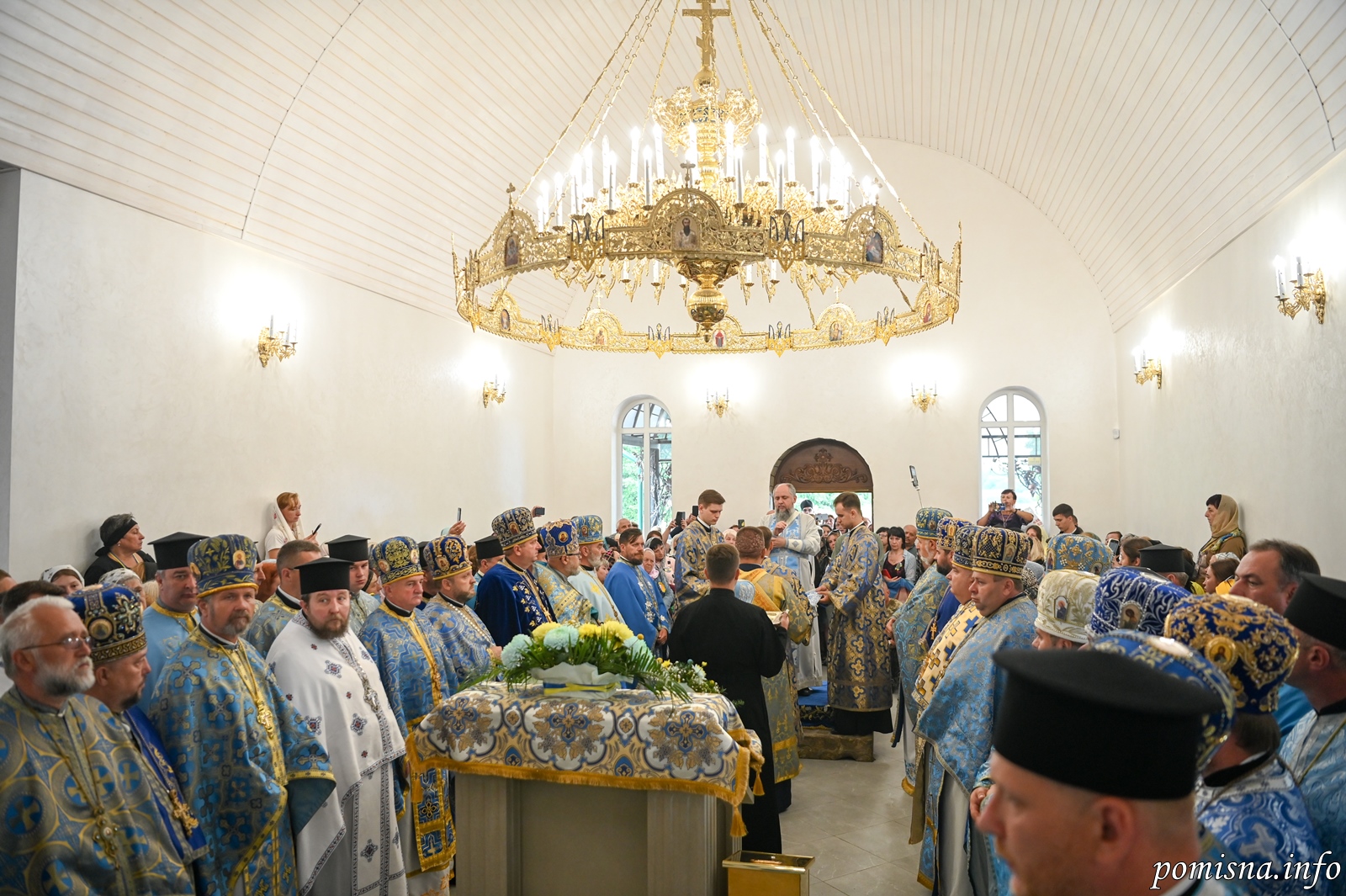Venerable Theophanes the Confessor of Sigriane (12 March)


Saint Theophanes the Confessor was born in 759 at Constantinople into a pious and renowned family. His father was a relative of the Byzantine emperor Leo the Isaurian (717-741). Three years after Theophanes was born, his father died, leaving his family under the care of the emperor himself.
Theophanes grew up at the court and became a dignitary under the emperor Leo IV the Khazar (775-780). His position obliged him to enter into marriage, but he persuaded his bride to live with him in virginity.
After the death of his parents, Theophanes and his wife visited monasteries in the Sygrian district (Asia Minor). Theophanes met the Elder Gregory Stratitios, who predicted to Theophanes’ wife that her husband would earn the crown of martyrdom.
Later the wife of Theophanes was tonsured a nun in one of the monasteries in Bithynia, and Theophanes went to a monastery in the Cyzicus region. With the blessing of his Elder, Theophanes founded the Kalonymon monastery on an island in the Sea of Marmara and secluded himself in his cell, transcribing books. Theophanes attained a high degree of skill in this occupation.
Later, Saint Theophanes founded another monastery in Sygria, at a place called the “Big Settlement”, and became its igumen. He participated in all the work of the monastery, and was an example to all in his love for work and ascetical effort. He received from the Lord the gift of wonderworking, healing the sick, and casting out demons.
The Seventh Ecumenical Council met in Nicea in 787, which condemned the heresy of Iconoclasm. Saint Theophanes was also invited to the Council. He arrived dressed in his tattered garments, but he revealed his wisdom in affirming the veneration of the holy icons.
At the age of fifty, Saint Theophanes fell grievously ill and he suffered terribly until the day he died. Even on his deathbed, the saint continued to work. He wrote his CHRONOGRAPHIA, a history of the Christian Church covering the years 285-813. This work has remained an invaluable source for the history of the Church.


During the reign of the emperor Leo the Armenian (813-820), when the saint was advanced in age, the Iconoclast heresy returned. They demanded that Saint Theophanes accept the heresy, but he firmly refused and was locked up in prison. His “Big Settlement” monastery was put to the torch. The holy confessor died in 818 after twenty-three days in prison.
After the death of the impious emperor Leo the Armenian, the “Big Settlement” monastery was restored and the relics of the holy confessor were transferred there.
Saint Theophanes, who was born in 760, was the son of illustrious parents. Assenting to their demand, he married and became a member of the Emperor’s ceremonial bodyguard. Later, with the consent of his wife, he forsook the world. Indeed, both of them embraced the monastic life, struggling in the monastic houses they themselves had established. He died on March 12, 815, on the island of Samothrace, whereto, because of his confession of the Orthodox Faith, he had been exiled by Leo the Armenian, the Iconoclast Emperor.
Theophanes is called the Sigrian because of Sigriane was his birthplace. He was a kinsman of the Emperor Leo the Isaurian and his son Copronymos. He possessed great wealth and splendor. But all of this lost its worth for Theophanes when the Lord Christ began to reign in his soul. He resisted his own marriage, and when he was compelled to marry, succeeded in counseling his bride to live with him in chastity, as brother and sister. As soon as his parents died, his wife entered a convent and he, a monastery. His monastery was located in the Sigrian Mountains in the Province of Cyzicus. The once-glorious and wealthy Theophanes lived in this monastery as the least of the poor. All were amazed at the change in him. Having become renowned because of his strong faith, abstinence and wisdom, he was summoned to the Seventh Ecumenical Council [Nicaea, 787 A.D.], where the veneration of icons was confirmed. Because of his purity and chastity, God bestowed upon him the gift of performing miracles, by which he cured all diseases, especially maniacal disorders and insanity.
He prayed to God for all the sick and the unfortunate, and through his prayers he helped them. Only when he himself became ill and his illness was prolonged did he refuse to pray to God for the restoration of his own health but endured his illness with gratitude. When the persecution by the iconoclasts resumed again under the wicked Leo the Armenian, Theophanes was brought to Constantinople and cast into prison, where he languished for two years in hardships, pain and humiliation. Then the emperor exiled him to the island of Samothrace. This banishment he had earlier foreseen in his spirit and had foretold it to his jailers. After he arrived at Samothrace, he lived for twenty-three days and then departed to His Lord and Creator to receive his merited wreath of glory.
Apolytikion of Theophanes the Confessor
Plagal of the Fourth Tone
The image of God, was faithfully preserved in you, O Father. For you took up the Cross and followed Christ. By Your actions you taught us to look beyond the flesh for it passes, rather to be concerned about the soul which is immortal. Wherefore, O Holy Theophanes, your soul rejoices with the angels.
Kontakion of Theophanes the Confessor
Second Tone
Receiving from God a revelation from the heights, thou swiftly didst leave the turmoil of the world, O Saint; and thou as a monk didst receive the power to perform miracles and the grace of true prophecy, depriving thyself of riches and thy spouse.
Source: oca.org / goarch.org / westserbdio.org




